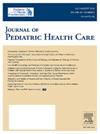Bridging Educational Procedural Gap Via Analysis of Procedures Performed by Pediatric Nurse Practitioners in Clinical Practice: A Cross Sectional Survey
IF 1.8
4区 医学
Q2 HEALTH POLICY & SERVICES
引用次数: 0
Abstract
Introduction
The complexity of healthcare is dynamic and requires educators to evaluate how to prepare pediatric nurse practitioners (PNPs). The research team sought to evaluate procedures currently being performed by primary and acute care PNPs in clinical practice and determine how this aligns with the educational preparation recommended for certification.
Method
A cross-sectional survey of primary and acute care PNPs were evaluated through an online survey.
Results
There were 2,265 surveys completed (Primary Care PNPs [n = 1925, 85%] and the Acute Care PNPs [n = 229, 10%]). Several positive associations were discovered among the procedures being performed by both AC and PC PNPs. This indicates that both AC and PC PNPs commonly performed these three same procedures.
Discussion
There were correlations with the recommended procedures for the Pediatric Nursing Certification Board (PNCB) pediatric certification examinations and the National Organization of Nurse Practitioner Faculties entry-level competencies. However, there were noted differences in the recommended procedures.
通过分析儿科护士从业人员在临床实践中执行的程序来弥合教育程序差距:一项横断面调查
医疗保健的复杂性是动态的,需要教育工作者评估如何准备儿科护士从业人员(PNPs)。研究小组试图评估临床实践中初级和急性护理PNPs目前执行的程序,并确定这与认证推荐的教育准备如何一致。方法采用横断面调查的方法,通过在线调查对初级和急性护理的PNPs进行评估。结果共完成问卷调查2265份,其中初级保健PNPs [n = 1925, 85%]和急症护理PNPs [n = 229, 10%]。在AC和PC PNPs进行的手术中发现了一些正相关。这表明AC和PC pnp通常执行这三个相同的过程。讨论与儿科护理认证委员会(PNCB)儿科认证考试的推荐程序和国家护士执业院系组织的入门级能力相关。然而,在推荐的程序中存在明显的差异。
本文章由计算机程序翻译,如有差异,请以英文原文为准。
求助全文
约1分钟内获得全文
求助全文
来源期刊

Journal of Pediatric Health Care
NURSING-PEDIATRICS
CiteScore
3.40
自引率
10.70%
发文量
140
审稿时长
24 days
期刊介绍:
The Journal of Pediatric Health Care, the official journal of the National Association of Pediatric Nurse Practitioners, provides scholarly clinical information and research regarding primary, acute and specialty health care for children of newborn age through young adulthood within a family-centered context. The Journal disseminates multidisciplinary perspectives on evidence-based practice and emerging policy, advocacy and educational issues that are of importance to all healthcare professionals caring for children and their families.
 求助内容:
求助内容: 应助结果提醒方式:
应助结果提醒方式:


